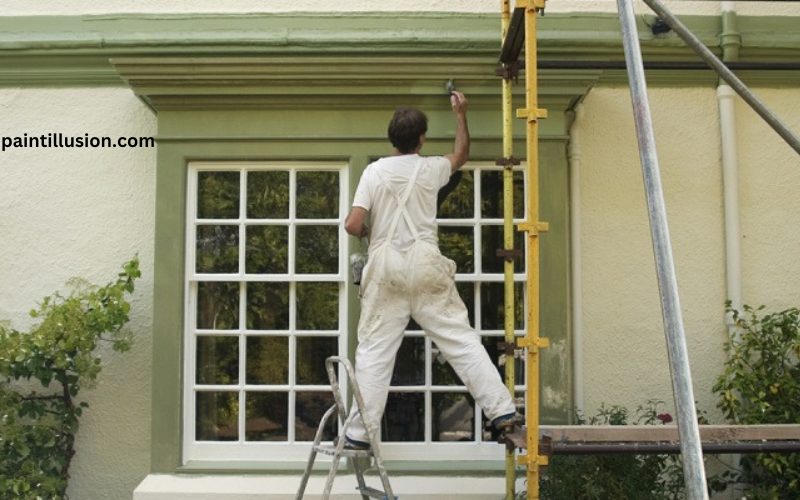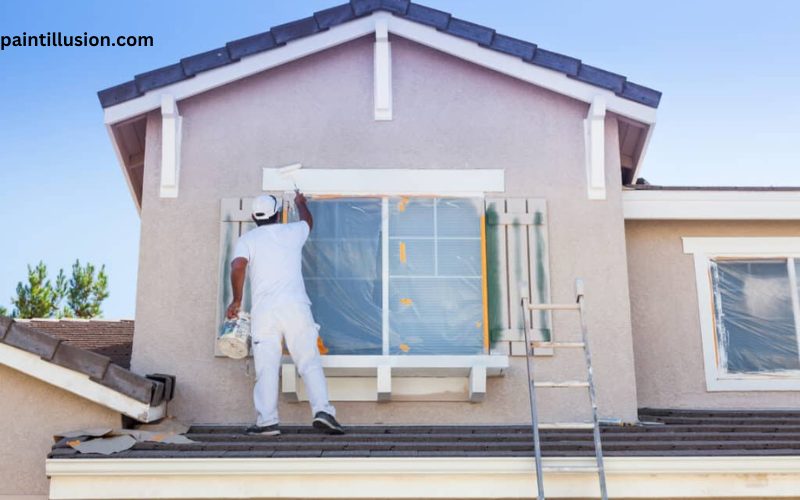Painting your house is a significant undertaking that can completely transform its appearance. Whether you’re looking to refresh the exterior or update the interior, painting requires careful planning and consideration of various factors. One of the most common questions homeowners have is, “How long does it take to paint a house?” In this article, we will explore the factors that affect the time it takes to paint a house, average time frames based on size, tips for speeding up the process, and more. By the end, you’ll have a better understanding of what to expect when embarking on a house painting project.
Factors that Affect the Time it Takes to Paint a House
Before diving into specific time frames, it’s essential to understand the factors that can impact how long it takes to paint a house. These factors include the size of the house, the condition of the surfaces to be painted, the number of coats required, the weather conditions, and the experience and efficiency of the painters.
The size of the house is perhaps the most obvious factor. A small bungalow will naturally take less time to paint compared to a sprawling mansion. Additionally, the condition of the surfaces plays a significant role. If there is extensive prep work required, such as repairing cracks or removing old paint, it will add to the overall time.
The number of coats needed is another consideration. While most painting projects require at least two coats for a professional finish, some situations may call for more. Dark or bold colors often require additional coats to achieve the desired result. Lastly, the weather conditions can affect the painting process. Extreme temperatures, high humidity, or rainy weather can slow down the drying time and prolong the overall project.

Average Time Frames for Painting a House Based on Size
While every house is unique, it can be helpful to have a general idea of the average time frames for painting based on size. Keep in mind that these are rough estimates and can vary depending on the factors mentioned earlier.
For a small to medium-sized house, such as a one-story ranch or a townhouse, the painting process typically takes around one to two weeks. This includes the time needed for prep work, such as cleaning and priming the surfaces, as well as the actual painting itself.
For larger homes, such as a two-story colonial or a multi-story mansion, the painting process can take anywhere from two to four weeks. These projects often require more extensive prep work and may involve the use of scaffolding or other equipment for hard-to-reach areas.
It’s important to note that these time frames are for professional painters working full-time on the project. If you’re painting your house yourself, it may take longer, especially if you have limited experience or availability.
Preparing Your House for Painting
Properly preparing your house for painting is crucial to ensure a smooth and long-lasting finish. This step involves cleaning the surfaces to be painted, repairing any damage, and applying primer if necessary.
Start by washing the exterior walls with a mild detergent and a pressure washer or a scrub brush. This will remove dirt, grime, and any loose paint. For interior painting, wipe down the walls with a damp cloth to remove dust and debris.
Next, inspect the surfaces for any cracks, holes, or other damage. Fill these areas with spackle or putty and sand them smooth once dry. For larger repairs, such as rotted wood, it’s best to consult a professional.
If you’re painting over a dark or bold color, applying a primer can help achieve better coverage and save time in the long run. Primer also helps the paint adhere properly to the surface, ensuring a more durable finish.
Choosing the Right Paint and Tools for the Job
Selecting the right paint and tools is essential for a successful house painting project. The type of paint you choose will depend on the surface you’re painting and the desired finish.
For exterior painting, opt for a high-quality exterior paint that is specifically formulated to withstand the elements. Look for paints that offer excellent durability, UV resistance, and protection against mold and mildew.
When it comes to interior painting, there are various options to consider. Latex paints are popular due to their ease of use, low odor, and quick drying time. However, if you’re painting a high-traffic area or a surface that requires frequent cleaning, such as a kitchen or bathroom, consider using a more durable paint, such as an enamel or a semi-gloss.
In addition to paint, you’ll need a range of tools and equipment to complete the job efficiently. This includes brushes, rollers, paint trays, drop cloths, sandpaper, and masking tape. Investing in high-quality tools will not only make the painting process smoother but also ensure better results.

How to Estimate the Time it Will Take to Paint Your House
Estimating the time it will take to paint your house can help you plan your project more effectively. While there are no hard and fast rules, there are a few steps you can take to make a rough estimate.
Start by calculating the total square footage of the areas you plan to paint. For exterior painting, measure the width and height of each wall and multiply them to find the square footage. Add up the square footage of all the walls to get the total. For interior painting, measure the length and height of each wall and follow the same process.
Next, consider the factors we discussed earlier, such as the condition of the surfaces, the number of coats required, and the weather conditions. If there is significant prep work involved or if you’re painting in unfavorable weather, add extra time to your estimate.
Based on the average time frames mentioned earlier, you can divide the total square footage by the average square footage painted per day to get an estimate of the number of days required. Keep in mind that this is a rough estimate, and it’s always better to allow for some buffer time.
Tips for Speeding up the Painting Process
While painting a house is a time-consuming task, there are several tips and techniques that can help speed up the process without compromising the quality of the finish.
First and foremost, ensure you have a well-organized and efficient workspace. Set up a designated area for all your painting supplies and tools, so they are easily accessible. This will save time spent searching for items and keep the workflow smooth.
Before starting to paint, make sure you have thoroughly prepped the surfaces. Properly cleaned and repaired surfaces will allow the paint to adhere better and reduce the chances of any issues later on.
Consider using a paint sprayer for larger areas, such as exterior walls or ceilings. Paint sprayers can cover large surfaces quickly and provide a smooth, even finish. However, they require proper technique and careful masking to avoid overspray.
Another time-saving tip is to use a paint and primer combination product. These paints eliminate the need for a separate primer coat and can save you significant time. However, they may not be suitable for all surfaces or situations, so make sure to read the manufacturer’s instructions and consult a professional if needed.
Hiring Professional Painters vs. DIY Painting
Deciding whether to hire professional painters or tackle the painting project yourself is a common dilemma for homeowners. While DIY painting can save you money, it’s essential to weigh the pros and cons before making a decision.
One of the main advantages of hiring professional painters is their expertise and experience. Professional painters have the necessary skills and knowledge to tackle even the most challenging projects. They can provide valuable advice on color selection, surface preparation, and paint quality.
Professional painters also have access to specialized equipment and tools that can make the painting process faster and more efficient. They are familiar with the latest techniques and trends in the industry, ensuring a high-quality finish.
On the other hand, DIY painting allows you to have full control over the project and can be a rewarding experience. It gives you the opportunity to personalize your space and save money on labor costs.
If you choose to paint your house yourself, make sure you have a realistic understanding of your skills and limitations. It’s crucial to invest time in proper preparation and research to ensure a successful outcome. Consider starting with smaller projects to gain confidence before tackling larger areas.
Common Challenges and How to Overcome Them
Painting a house can come with its fair share of challenges, but with proper planning and preparation, you can overcome them and achieve a professional-looking finish.
One common challenge is dealing with uneven surfaces or textured walls. It can be more time-consuming to paint over these surfaces compared to smooth walls. Start by using a brush to cut in around edges and corners, then use a roller to cover larger areas. If necessary, apply an additional coat to ensure even coverage.
Another challenge is achieving a smooth finish without brush or roller marks. To minimize brush strokes, use high-quality brushes and apply the paint in thin, even coats. When using a roller, apply consistent pressure and use long, overlapping strokes to avoid visible seams.
If you’re painting the exterior of your house, weather conditions can pose a challenge. Avoid painting in extreme temperatures or high humidity, as it can affect the drying time and adhesion of the paint. Choose a day with mild weather and plan your painting schedule accordingly.
How to Maintain the Paint Job and Extend Its Lifespan
Once you’ve invested time and effort into painting your house, it’s essential to take steps to maintain the paint job and extend its lifespan.
Regular cleaning is key to keeping your painted surfaces looking their best. Use a mild detergent and a soft brush or sponge to remove dirt and grime. Avoid using abrasive cleaners or scrub brushes, as they can damage the paint.
Inspect your painted surfaces regularly for any signs of damage or wear. Touch up any areas with chipped or peeling paint promptly to prevent further deterioration. Keeping an eye on the condition of your paint job will help you catch any issues early on and address them before they become more significant problems.
In addition to regular maintenance, consider applying a protective coating or sealer to your painted surfaces. These products can provide an extra layer of protection against UV rays, moisture, and other elements, helping to prolong the life of your paint job.
Conclusion
Painting a house can be a time-consuming task, but with proper planning and preparation, it can be a rewarding experience. By considering the factors that affect the time it takes to paint a house, estimating the time required based on size, and following the tips and techniques outlined in this article, you can successfully complete your painting project.
Whether you decide to hire professional painters or tackle the job yourself, remember to prioritize proper surface preparation, choose high-quality paint and tools, and maintain your paint job regularly. With the right approach, your newly painted house will not only look beautiful but also stand the test of time.
CTA: If you’re ready to tackle your house painting project, contact us today for a free consultation and estimate.

